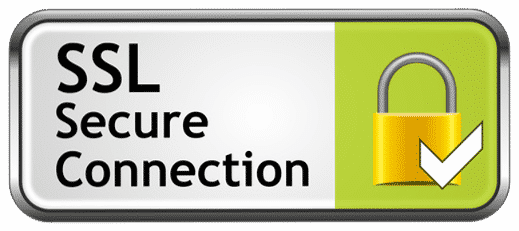Trade LexiPro 14X and latest Trader LexiPro 40 Version 4000

Still have questions?
Frequently Asked Questions
Why is private information required for account verification?
We need to collect some documents to ensure all accounts comply with regulatory standards. This process helps to prevent fraud and identity theft, fully protecting your information. You can upload these documents through our secure website or send them to us at info@tradelexipro.net. For more details about our verification process, click here.
What documents are needed to complete the verification of my account on Trade LexiPro 14X?
To commence trading and to process withdrawals, the following documents are necessary:
An easily readable scan or image of a government-issued identification (for example, ID card, passport).
A recent evidence of residency (such as utility bill, phone bill, or bank statement).
Ensure to provide scans or photos of both sides of your card when funding your account using a credit card.
Uncover more information about our verification requirements here.
What needs to be shown on my state-issued ID card?
The government-issued ID you submit should be clear and easily legible, showcasing your full name, ID number, picture, and expiry date. Ensure that the ID is presently valid and won't hit its expiration date within the next three months.
What specific details are required on my residential evidence (utility bill)?
Your residence confirmation document should clearly display your name, address, the date of billing, and details of the issuing firm. The document should be recent, specifically not more than six months old.
What kinds of ID are acknowledged as valid government-issued IDs?
The types of government-issued IDs accepted are:
Passport (acceptable from all nationalities)
National ID card (applicable for all nationalities)
Which papers are valid as authentic evidence of residence?
The following forms are valid for verifying address proof:
- Landline telephone bill
- Home internet bill
- Water utility bill
- Electricity bill or voucher
- Gas utility bill
- Bank statement with the complete address
What is the definition of an investor questionnaire?
As part of our regulatory obligations, we ask our clients to complete a brief investor questionnaire. This allows us to assess your financial knowledge, skills, and background, thereby enabling us to tailor your trading experience and offer the required support.
What qualifies a person to be a professional client?
An adept customer has the understanding and expertise to make informed investment decisions and grasp related risks.
What defines a retail customer?
A person not meeting the criteria of a professional client or eligible counterparty is classified as a retail client. The maximum level of protection is provided to retail clients.
Why was my account put on hold because of inadequate validation?
If you fail to complete the verification process within the stipulated time frame, your account will be suspended as per regulatory directives. We are accountable as per these regulations. Upon receipt and approval of the necessary documents, your account will be restored. For more details on verification, click here.
Banking FAQs
What currencies can I use with my Trade LexiPro 14X account?
Opening a trading account with Trade LexiPro 14X does not require an initial deposit. However, to gain complete access to our educational tools and premium services, and to start trading, you need to deposit a minimum of $250.00 into your account.
Which deposit methods are available?
Various methods exist for funding your trading account, including major credit cards, e-payment systems, and bank transfers.
Do I need to make an initial deposit for account setup?
Initiating your trading account doesn't require a deposit. However, in order to start trading and avail our extensive range of educational tools and expert services, a minimum deposit of $250.00 is needed.
What's the minimum withdrawal amount?
The minimum withdrawal limit is $50.00 for credit or debit cards and e-wallets, while for wire transfers, it stands at $100.00.
What is the time it takes to process a withdrawal request?
Typically, it takes between 3 and 5 business days to handle withdrawal requests. The time it takes for the funds to show up in your bank account can vary as it's contingent on the processing times of your bank and credit card provider.
How can I withdraw funds from my account?
To withdraw funds, log into your account, proceed to the trading platform, select your profile name, and opt for 'Withdrawal.' Define the withdrawal amount (wire transfers require a minimum of $100 and $50 for other means), and confirm your choice by choosing 'Withdraw.' You will be prompted to complete the transaction. Once processed, funds are typically available within a timeframe of 3-5 business days.
What possible payment methods can be used for withdrawals?
The initial payment method you used for your deposit is employed for refunding withdrawals. For example, if a Mastercard was employed for deposit, the initial amount withdrawn (up to the deposited amount) will be returned to that Mastercard. Any additional earnings can be withdrawn via any of our endorsed payment methods of your choice.
What are the expenses associated with trading platforms?
The expenses linked to various platforms can vary widely, including spreads, commissions, withdrawals, inactivity, and overnight financing charges. Before signing up, it's vital to scrutinize a platform's fee arrangement to understand the total trading costs.
There are no hidden fees or commissions with Trade LexiPro 14X. All details will be disclosed during the account plan selection.
Are my profits liable to tax?
Depending on where you live, your tax obligations may vary. Trade LexiPro 14X does not assume any responsibility for tax liabilities. You are in charge of comprehending your tax responsibilities, accurately reporting your trades and earnings, and remitting any taxes owed.
Basic Trading FAQs
What is involved in a demo account, and how is it used?
A sample account gives users the chance to practice trading with virtual cash, removing the threat of losing actual money. This is a great way to familiarize yourself with the platform's functionalities and to fine-tune your trading strategies before transitioning to a live account.
What types of assets can be traded on a platform?
Various trading platforms provide the capability to transact across a broad spectrum of assets, including stocks, Forex, commodities, indices, and CFDs (Contracts for Difference). The variety of assets available may vary from one platform to another. Explore more than 1,000 asset permutations with Trade LexiPro 14X.
What is the significance of investment amounts?
The flexibility of investment amounts in trades can be determined by your individual trading strategy. The impact they hold on potential return on investment and payout percentages gives you the ability to adjust as per your likings and market scenarios.
What is the meaning of underlying financial assets?
The underlying financial assets are the assets from which the value of your trade is derived. These include stocks, commodities, currency pairs, and indices. While you don't directly own these assets, their value corresponds to the current market price at the time of your trade. The primary categories of assets are as follows:
- Stocks such as Apple, Nvidia, Facebook
- Market indices like DAX30, Dow Jones, NASDAQ
- Forex pairs such as USD/EUR, USD/GBP, EUR/CHF
- Commodities namely wheat, coffee, oil, gold
What is signified by the prices/rates shown?
The displayed costs reflect the real-time buying and selling prices of the underlying assets. These rates are indicative of the average prices observed on global financial markets, updated based on information gathered from various sources.
What does the color of the ask and bid rates signify?
The colors representing the ask and bid rates reflect the current price's variation compared to the previous rate. Typically, green symbolizes a price rise, whereas red signifies a price drop.
How do trading signals operate?
Trading signals act as prompts or recommendations, highlighting the perfect times to buy or sell an asset, based on various market indicators. These signals might be generated by experienced traders or automated trading systems like Trade LexiPro 14X, Trader LexiPro 40, Trader 4000 LexiPro. They merely offer advice and guidance, but they do not guarantee a successful trade. The choice to follow this advice in any particular situation is a judgement you need to make by yourself.
Why can't I execute a trade?
If you lack the necessary funds for a transaction, the position cannot be created. It is crucial to double-check your trading account balance to ensure you have the necessary margin.
What are the limitations on trading amounts?
The scope of trade volumes you can participate in depends on the asset class, your margin availability, and your account type. These limits are established to accommodate various trading strategies and account setups.
Where can one find the trading hours for assets?
In the Asset Index, you can find the trading hours, their end times, and additional important information.
What is the meaning of order execution?
Order execution refers to the process of setting and finalizing your trade request. Given the varying nature of market rates, not all requests may be fulfilled as expected. The order execution tool matches your trade with the markets and determines the price for the trade execution, ensuring your request aligns with the current market conditions.
Are trading platforms secure enough?
Reliable trading platforms employ advanced security measures such as SSL encryption, two-factor authentication (2FA), and distinct accounts to protect users' assets and confidential data. Always confirm the platform's security practices and compliance with regulations. At Trade LexiPro 14X, ensuring the safety of your personal information and trading results is our top priority.
Frequently Asked Inquiries
What is the meaning of a trading platform?
A software application that traders use to execute trades, monitor market trends, and manage their trading accounts is known as a trading platform. These platforms, including Trade LexiPro 14X, often come equipped with features such as real-time quotes, charting tools, news feeds, and a variety of tools designed to facilitate trading.
How can I choose the most appropriate trading platform?
When choosing a trading platform, consider factors such as the user interface, the variety of trading tools offered, expenses and fees, regulatory adherence, security precautions, customer support, and the availability of educational resources. A review and rating comparison from other users could also offer valuable perspective.
Can I use a trading platform on my mobile device?
Indeed, most modern trading platforms offer mobile applications for both iOS and Android, allowing traders to manage their accounts and perform trades on the go. Trade LexiPro 14X enables trading from any device at your own convenience.
What kind of client support is offered?
Numerous trading platforms provide customer support through different channels, including live chat, email, and telephone calls. They also offer round-the-clock assistance in several languages to cater to their global users. The Trade LexiPro 14X platform is a prime example of these platforms.
Learning Related FAQs
Are educational resources provided by trading platforms?
Numerous trading platforms offer educational resources, including video tutorials, webinars, e-books, articles, and demo accounts. These resources are designed to help traders improve their knowledge and trading skills. We are devoted to providing you with a comprehensive Learning Center that is useful even for beginners in trading.



